![]() The Brembana Valley is a hard but generous land to those who can appreciate and love it.
The Brembana Valley is a hard but generous land to those who can appreciate and love it.
As you reach the Ventulosa of Villa d'Alme' you are in the Brembana Valley. Turning right along Botta di Sedrina, at about two kilometres, you get to Sedrina. Here you can visit the wonderful church built by Mario Codussi (who also built lots of monuments in Venice as well) where you can find an important Lorenzo Lotto's masterpiece. The road you are driving on follows the line of the ancient Priula road but soon it will be substituted by a new clearway. Along this road you can see the oldest bridge of the Valley.
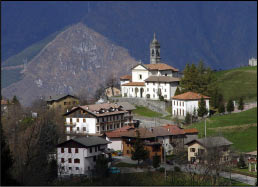 It has a lot of little arches and from here Pacì Paciana better known as the Padrù, the "owner", of the Brembana Valley throw himself into the river. He was a highway man whose life became a legend. Turning on your left, you reach Brembilla a very labourious village. Following the road you get to the vast and green valley of Zogno. Zogno with more than 10.000 inhabitants, industries and offices is the chief town of the whole Valley. Zogno has also a lot of hamlets settled near green grazings and woods. The big cross of Canto Alto watches over the whole valley of Zogno. Here tourists can visit the "Museum of the Valley", a monumental area near the church and the monastery of Romacolo. You cannot help visiting the church of Grumello de Zanchi where you can find some precious paintings of De Pieri. Then in Stabello you can also see a well-preserved romanic church.
It has a lot of little arches and from here Pacì Paciana better known as the Padrù, the "owner", of the Brembana Valley throw himself into the river. He was a highway man whose life became a legend. Turning on your left, you reach Brembilla a very labourious village. Following the road you get to the vast and green valley of Zogno. Zogno with more than 10.000 inhabitants, industries and offices is the chief town of the whole Valley. Zogno has also a lot of hamlets settled near green grazings and woods. The big cross of Canto Alto watches over the whole valley of Zogno. Here tourists can visit the "Museum of the Valley", a monumental area near the church and the monastery of Romacolo. You cannot help visiting the church of Grumello de Zanchi where you can find some precious paintings of De Pieri. Then in Stabello you can also see a well-preserved romanic church.
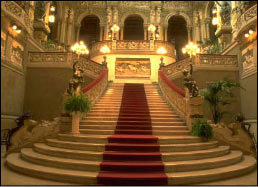 The painters Licini and Gavazzeni were born in Poscante, another hamlet of Zogno. In Endenna there is one of the most ancient church of the whole valley where is preserved the skull of the apostle Barnaba. Following the road you reach Ambria (looking on your left you see three fountains and some ancient and interesting buildings of the Fifteen Century) and at least you get to San Pellegrino Terme, the most famous tourists resort of the province. Here you can visit the old "Grand Hotel" and the "Casinò". In San Pellegrino Terme is bottled the famous mineral water exported all over the world. From San Pellegrino Terme you go to San Giovanni Bianco, better known as "the village of the bridges" in fact you can see seven bridges, most of them very ancient.
The painters Licini and Gavazzeni were born in Poscante, another hamlet of Zogno. In Endenna there is one of the most ancient church of the whole valley where is preserved the skull of the apostle Barnaba. Following the road you reach Ambria (looking on your left you see three fountains and some ancient and interesting buildings of the Fifteen Century) and at least you get to San Pellegrino Terme, the most famous tourists resort of the province. Here you can visit the old "Grand Hotel" and the "Casinò". In San Pellegrino Terme is bottled the famous mineral water exported all over the world. From San Pellegrino Terme you go to San Giovanni Bianco, better known as "the village of the bridges" in fact you can see seven bridges, most of them very ancient.
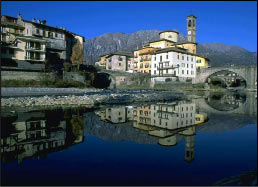 Carlo Ceresa and Giovanni Busi known as the "Cariani" were born here. But before reaching San Giovanni Bianco you have to visit Dossena in order to see a church where there are some paintings of Veronese, Santacroce, Ceresa, Ridolfi, Cassano, Reimier, Meevens and Cefrondi. If you like you can reach San Giovanni Bianco passing by San Pietro d'Orzio. Leaving Dossena you have to visit Cornello dei Tasso a jewel of the Brembana Valley: this hamlet is the famous Torquato Tasso's father's birth place. Then you can go "beyond the Goggia", the high part of the Brembana Valley where there is the village of Lenna with its wonderful neo-Gothic church dedicated to San Martino (here there is a precious altar-piece painted by Lattanzio from Rimini and some sculptures of Andrea Fantoni). On the right of Piazza Brembana there are Valnegra and Roncobello "the green pearls" of the Valley; beyond them there is Isola di Fondra and then Trabuchello and Branzi.
Carlo Ceresa and Giovanni Busi known as the "Cariani" were born here. But before reaching San Giovanni Bianco you have to visit Dossena in order to see a church where there are some paintings of Veronese, Santacroce, Ceresa, Ridolfi, Cassano, Reimier, Meevens and Cefrondi. If you like you can reach San Giovanni Bianco passing by San Pietro d'Orzio. Leaving Dossena you have to visit Cornello dei Tasso a jewel of the Brembana Valley: this hamlet is the famous Torquato Tasso's father's birth place. Then you can go "beyond the Goggia", the high part of the Brembana Valley where there is the village of Lenna with its wonderful neo-Gothic church dedicated to San Martino (here there is a precious altar-piece painted by Lattanzio from Rimini and some sculptures of Andrea Fantoni). On the right of Piazza Brembana there are Valnegra and Roncobello "the green pearls" of the Valley; beyond them there is Isola di Fondra and then Trabuchello and Branzi.
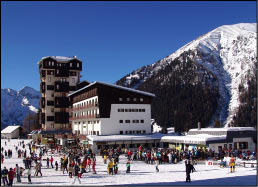 From here you can go to the branch of Carona (famous for its "twin lakes"), or to the one of Valleve and Foppolo, very important European ski resorts. On the left there is Olmo al Brembo from where you can reach the other valleys: the Stabina Valley (with Cassiglio, Ornica and Valtorta, very interesting mountain recesses) the Averara Valley with Averara (where you can see the ancient Venice custom) Santa Brigida and Cusio (near this village there is Monte Avaro with its wonderful ski resorts). In the Brembana Valley there are also the villages of Piazzolo, Piazzatorre (the so-called "old lady" of tourism) and Mezzoldo where is the terminus of Priula road. From here begins a beautiful panoramic road that reaches Cà San Marco and the mountain pass through which you can go to Morbegno. Our travel through the Brembana Valley is over. Here during the transhumance there are lots of cows herds whose precious milk is used to make the famous "FORMAI DE MUT" an inimitable and traditional Orobic cheese.
From here you can go to the branch of Carona (famous for its "twin lakes"), or to the one of Valleve and Foppolo, very important European ski resorts. On the left there is Olmo al Brembo from where you can reach the other valleys: the Stabina Valley (with Cassiglio, Ornica and Valtorta, very interesting mountain recesses) the Averara Valley with Averara (where you can see the ancient Venice custom) Santa Brigida and Cusio (near this village there is Monte Avaro with its wonderful ski resorts). In the Brembana Valley there are also the villages of Piazzolo, Piazzatorre (the so-called "old lady" of tourism) and Mezzoldo where is the terminus of Priula road. From here begins a beautiful panoramic road that reaches Cà San Marco and the mountain pass through which you can go to Morbegno. Our travel through the Brembana Valley is over. Here during the transhumance there are lots of cows herds whose precious milk is used to make the famous "FORMAI DE MUT" an inimitable and traditional Orobic cheese.
Environment in Brembana Valley
FOSSILS ARE THE ECHO OF A PREHISTORIC TROPICAL SEA SET IN THE BREMBANA VALLEY
Scientific notions lie outside the topics of a tourists guide. But it's interesting to know that millions of years ago a hot tropical sun shone in the Brembana Valley and the fossils that have been studied by scientists show the succession of different geological eras. Even the curiosity of the tourist is satisfied when he discovers among the rocks a fossil. Everything begun 20 millions of years ago when the Mediterranean sea was much more wider than today and was joined to the Atlantic ocean and the Indian one. Italy did not exist and Europe and Africa were smaller than today. Europe consisted only of the plains of European Russia, Poland, Germany and France.
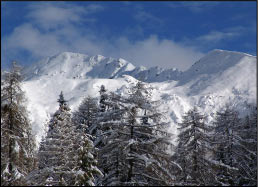 Then Africa started to slide towards Europe and this movement created the Pyrenees ranges, the Alps and the Balkans. The Appennines rose from the waters of the ancient Mediterranean sea some millions of years later. The slide of the continent narrowed the Mediterranean sea that bacame a big dry lake. Only a few millions of years ago, it was opened a crack in Gibraltar and the waters of the Atlantic ocean filled the Mediterranean sea giving it the look it has got today. Eventually 20 000 years ago the collapse of the Strait of Bosphorus joined the Mediterranean sea to the Black sea.
Then Africa started to slide towards Europe and this movement created the Pyrenees ranges, the Alps and the Balkans. The Appennines rose from the waters of the ancient Mediterranean sea some millions of years later. The slide of the continent narrowed the Mediterranean sea that bacame a big dry lake. Only a few millions of years ago, it was opened a crack in Gibraltar and the waters of the Atlantic ocean filled the Mediterranean sea giving it the look it has got today. Eventually 20 000 years ago the collapse of the Strait of Bosphorus joined the Mediterranean sea to the Black sea.
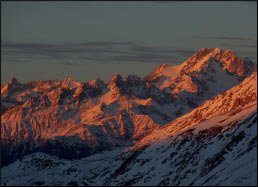 The cold and fresh waters of the north of Russia through the Black sea and Aegean flowed into the Mediterranean lowering its temperature and its salinity. In this way the sea took on the geographical and climatic conformation it has today and became a suitable environment to the most evolved prehistoric man- HOMO SAPIENS- from which, through well-know prehistoric and historic events, the human being has developed. It's difficult to guess the aspect of the earth before the man appeared. Such far-off eras seem almost unthinkable to the human mind. But those incredible transformations really happened and some proofs of these evolutions were found even in the Brembana Valley in particular, from 1976, in the land of Zogno.
The cold and fresh waters of the north of Russia through the Black sea and Aegean flowed into the Mediterranean lowering its temperature and its salinity. In this way the sea took on the geographical and climatic conformation it has today and became a suitable environment to the most evolved prehistoric man- HOMO SAPIENS- from which, through well-know prehistoric and historic events, the human being has developed. It's difficult to guess the aspect of the earth before the man appeared. Such far-off eras seem almost unthinkable to the human mind. But those incredible transformations really happened and some proofs of these evolutions were found even in the Brembana Valley in particular, from 1976, in the land of Zogno.
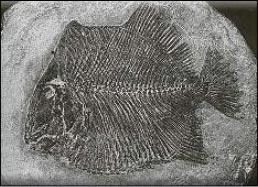 Here were discovered lots of fossils: fishes, reptiles and plants of about 220 millions of years (upper Triassic). When these creatures died they fell on the bottom of the ancient Mediterranean sea. During the millenniums those stratums petrified thanks to particular chemical that were in the water. When 50 millions of years ago the Alps born, the bottom of the sea containing these fossils was lifted. The action of glaciers, rivers and rain scratched the surface of those stratums showing the prints of the petrified organisms. In ancient eras in the Brembana Valley there was a very deep sea, rather warm and salted, with coastlines and green woods really alike to those ones you can find near the coral cliffs in the Atlantic and Pacific oceans. Because the sedimentation process lasted millions of years it produced very thick stratums of organic sediments.
Here were discovered lots of fossils: fishes, reptiles and plants of about 220 millions of years (upper Triassic). When these creatures died they fell on the bottom of the ancient Mediterranean sea. During the millenniums those stratums petrified thanks to particular chemical that were in the water. When 50 millions of years ago the Alps born, the bottom of the sea containing these fossils was lifted. The action of glaciers, rivers and rain scratched the surface of those stratums showing the prints of the petrified organisms. In ancient eras in the Brembana Valley there was a very deep sea, rather warm and salted, with coastlines and green woods really alike to those ones you can find near the coral cliffs in the Atlantic and Pacific oceans. Because the sedimentation process lasted millions of years it produced very thick stratums of organic sediments.
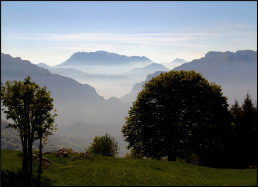 Those ancient stratums form particular areas of the Brembana Valley an the Imagna Valley. This is why in the Orobic Prealpes and in the Brembana Valley you can discover fossils of different shells, coquinas, gastropods of every size, little corals, sea urchins and other invertebrates. You can also discover big and very nice ones (even 80 cm) in the mountains near Piani of Scalvino near by the village of Lenna. We hope that all those fossils could be gathered in a museum and soon new researches could began in order to find other interesting and scientific proofs of the past of our Valley.
Those ancient stratums form particular areas of the Brembana Valley an the Imagna Valley. This is why in the Orobic Prealpes and in the Brembana Valley you can discover fossils of different shells, coquinas, gastropods of every size, little corals, sea urchins and other invertebrates. You can also discover big and very nice ones (even 80 cm) in the mountains near Piani of Scalvino near by the village of Lenna. We hope that all those fossils could be gathered in a museum and soon new researches could began in order to find other interesting and scientific proofs of the past of our Valley.








